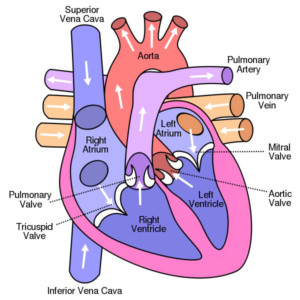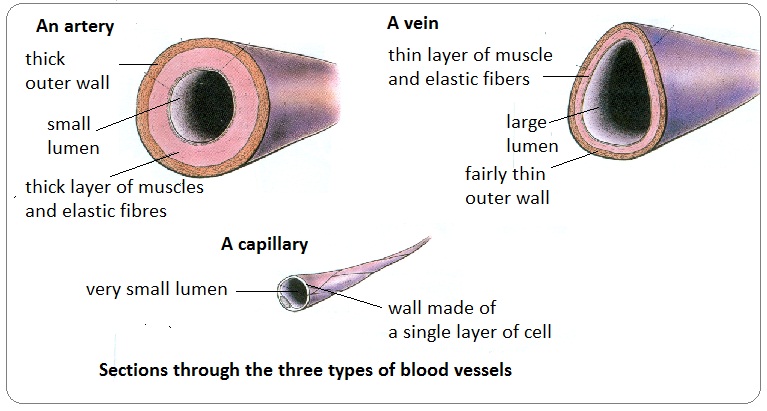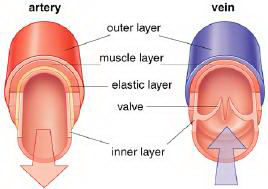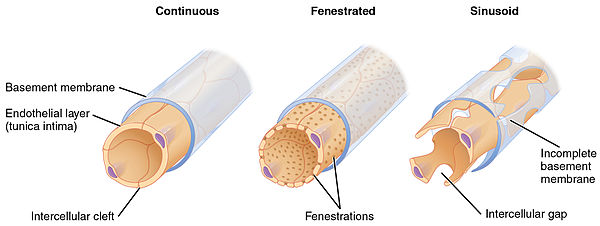The structure and function of the heart, arteries, veins, and capillaries is vital for the circulatory system to work. The overall function of the circulatory system is to transport blood and lymph around the body. In doing so it delivers oxygen and nutrients to the body, removes waste products from the body, is involved in the regulation of body temperature, and helps to fight against infection. Within the cardiovascular system, which is the main focus in Preliminary PDHPE, the structure and function of the heart, arteries, veins, and capillaries help to achieve this greater purpose of the circulatory system.
Structure and function of the heart
 The main function of the heart is to pump blood around the body. It does this through regular and rhythmical contractions of its muscular walls, particularly the muscles around the left and right ventricles. The right ventricle is responsible for pumping blood through the pulmonary circulation (to your lungs) using the pulmonary artery. on the other side, the left ventricle is responsible for pumping blood around the systemic circulation (to your body) via the aorta.
The main function of the heart is to pump blood around the body. It does this through regular and rhythmical contractions of its muscular walls, particularly the muscles around the left and right ventricles. The right ventricle is responsible for pumping blood through the pulmonary circulation (to your lungs) using the pulmonary artery. on the other side, the left ventricle is responsible for pumping blood around the systemic circulation (to your body) via the aorta.
Above each ventricle is an atrium, which fills with blood ready to transfer into the ventricles. The right atrium fills with de-oxygenated blood from the vena cava, returning from the body, while the left atrium fills with oxygenated blood from the pulmonary vein bringing blood back from the lungs.
Between the various structures there are 4 main valves, which ensure blood only flows in the direction it is meant to. These are the: mitral valve, the aortic valve, the pulmonary valve and the tricuspid valve.
Structure and function of arteries
Arteries are provide the tubing to take blood away from the heart (regardless of oxygenation), and also help the heart to pump the blood. Therefore, arteries require elastic walls to cope with the pressure caused when the ventricles contract and muscle to provide a further contraction to help move the blood. The muscles also help dilate (open) the artery to increase blood flow. Arteries have high pressure and fast blood flow.
Structure and function of veins
In direct contrast to arteries, veins provide the tubing to take blood back to the heart. Veins have a thinner wall because they do not have to deal with constant changes in blood pressure with heart contractions, and the blood moves more slowly through them. They contain valves, which help to prevent blood flowing in the wrong direction. This is needed especially in veins that are bringing blood up-wards against gravity. Veins are often blue in colour and sit closer to the skin than arteries, making them visible to the naked eye.
Structure and function of capillaries
Capillaries exist between arteries and veins and allow for nutrient and waste exchange between tissue and the blood. Therefore, capillaries are very thin and have permeable membranes to allow for the movement of nutrients, waste products, and gases.
There are three (3) different types of capillaries: continuous, fenestrated, and sinusoid. As the diagram below shows, the capillary gets more and more permeable from left to right.
Myocytes (muscle cells) have a large density of continuous capillaries around them to allow for this exchange to occur. Type 1 (slow twitch or aerobic) myocytes have more capillaries than type 2 (fast twitch or anaerobic) myocytes.



